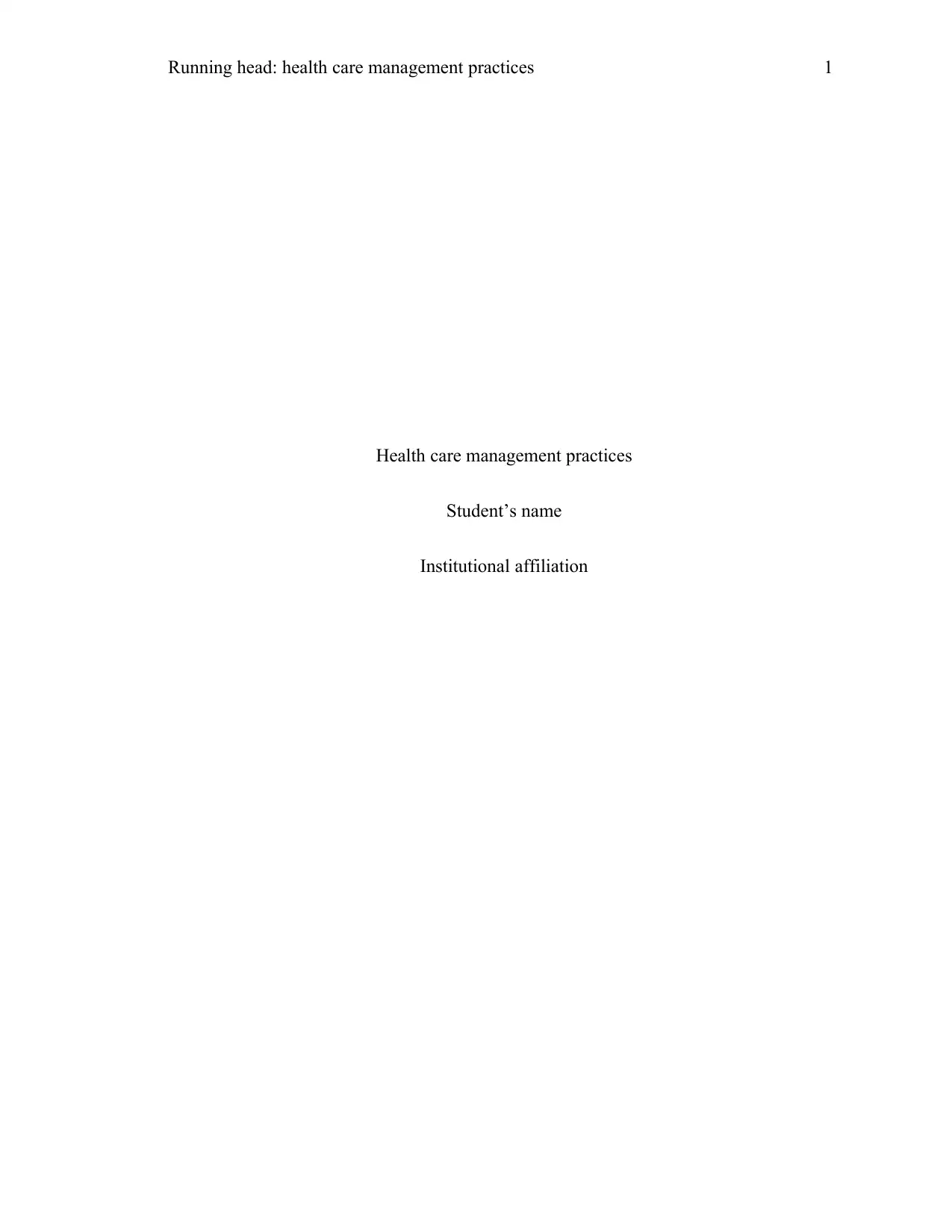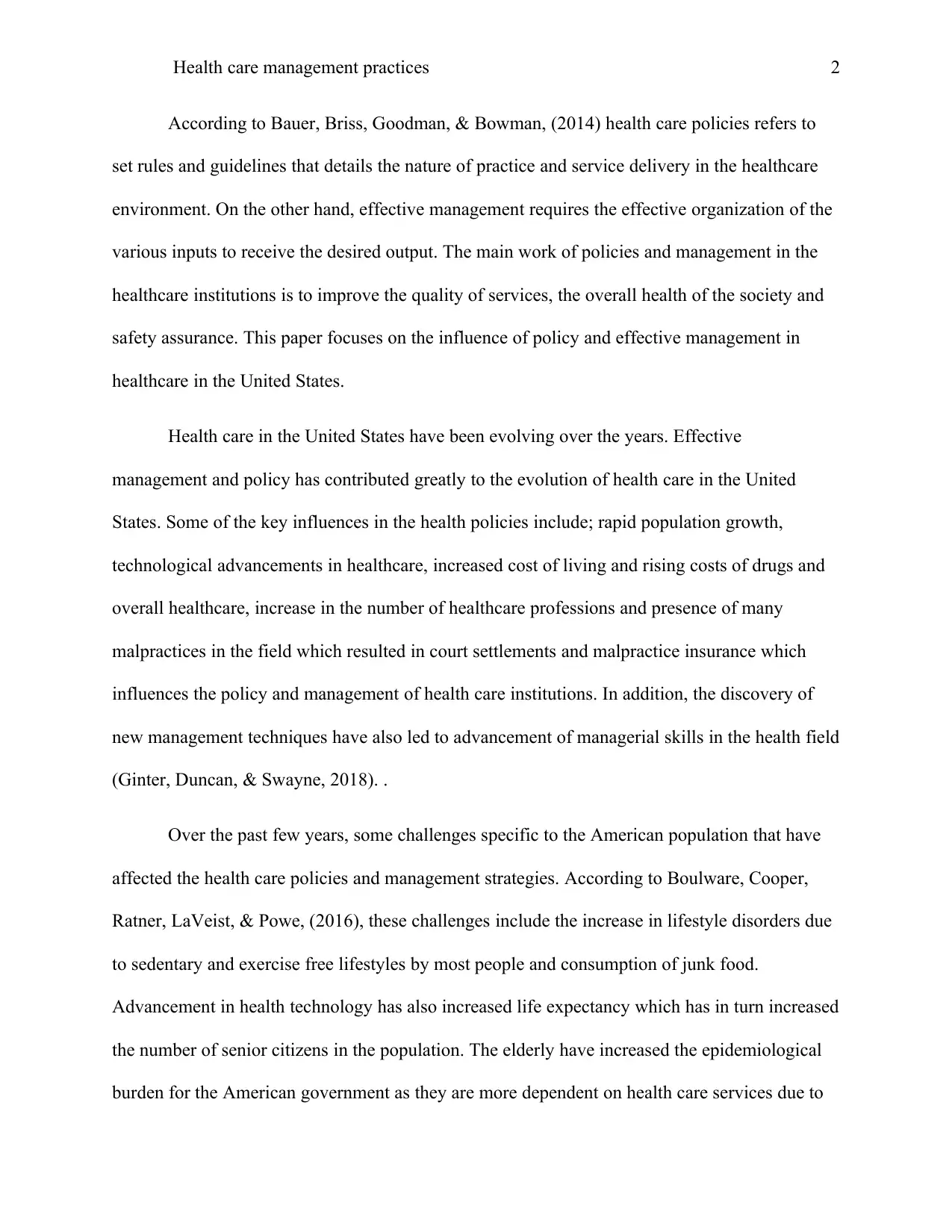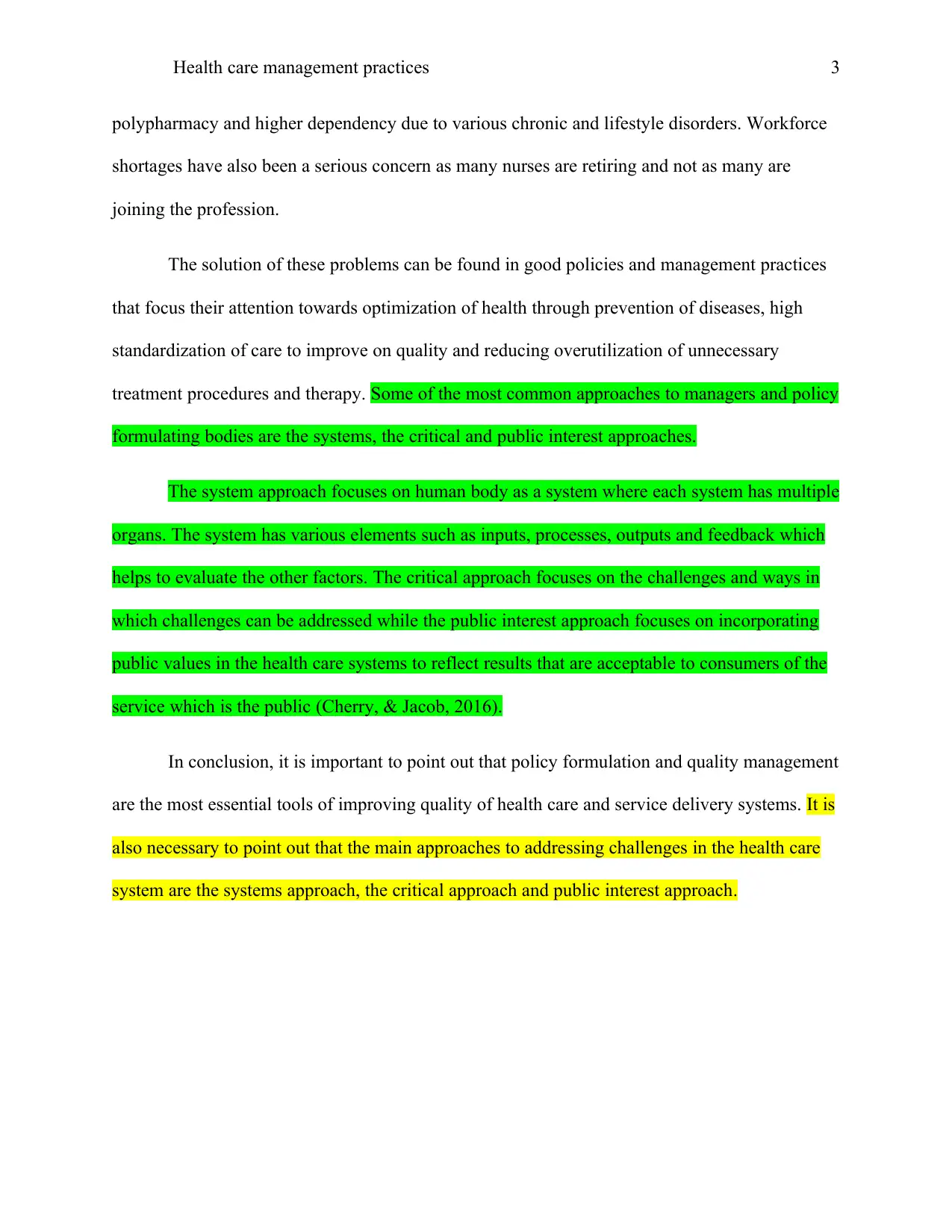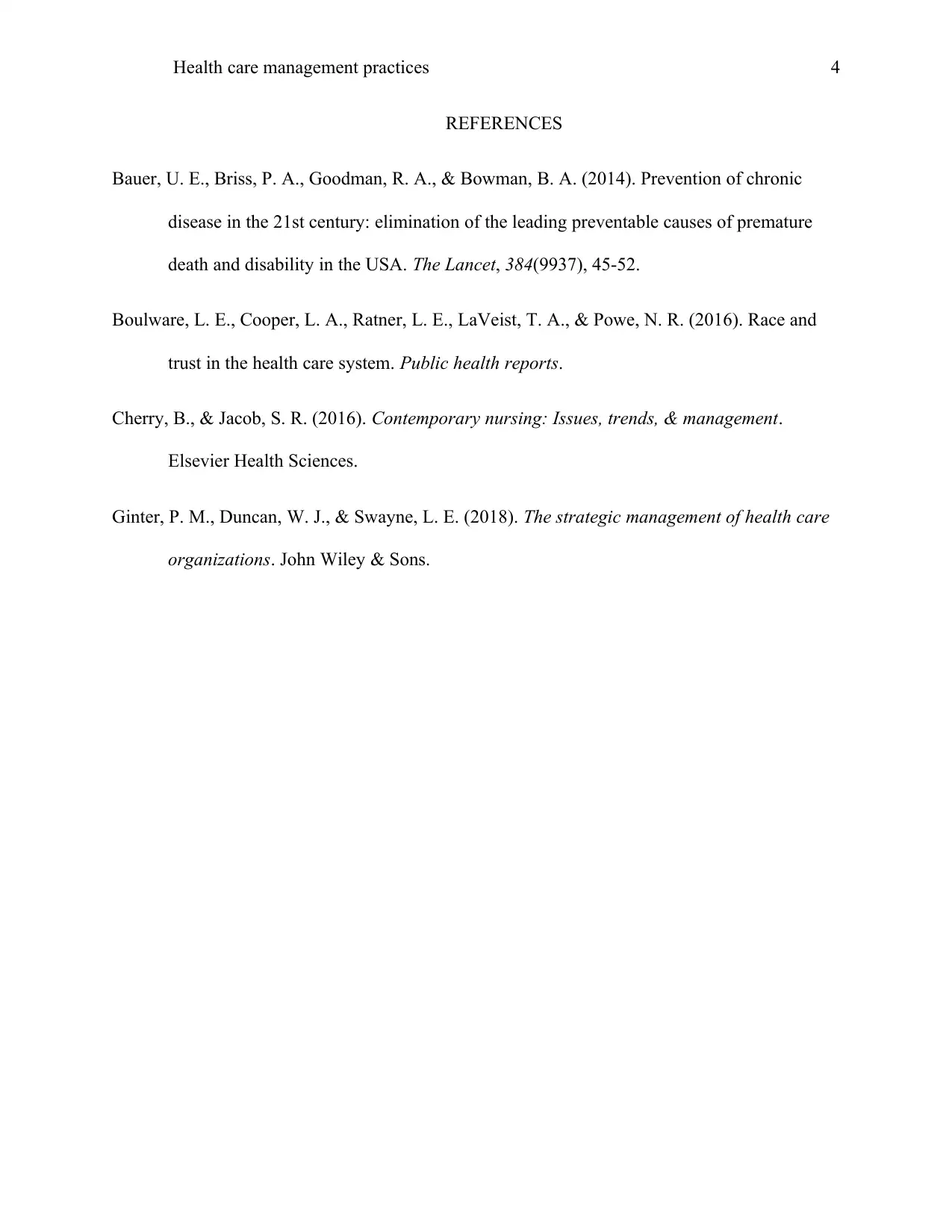Analyzing Policy & Management in Healthcare in the United States
VerifiedAdded on 2023/06/03
|4
|799
|168
Essay
AI Summary
This essay examines the influence of policy and effective management on healthcare in the United States, highlighting the evolution of the system due to factors like population growth, technological advancements, rising costs, and workforce challenges. It discusses how lifestyle disorders, increased life expectancy, and workforce shortages have affected healthcare policies and management strategies. The essay also explores different approaches to management and policy formulation, including the systems approach, critical approach, and public interest approach, emphasizing the importance of these tools in improving healthcare quality and service delivery. The document is available on Desklib, a platform offering study resources for students.
1 out of 4










![[object Object]](/_next/static/media/star-bottom.7253800d.svg)